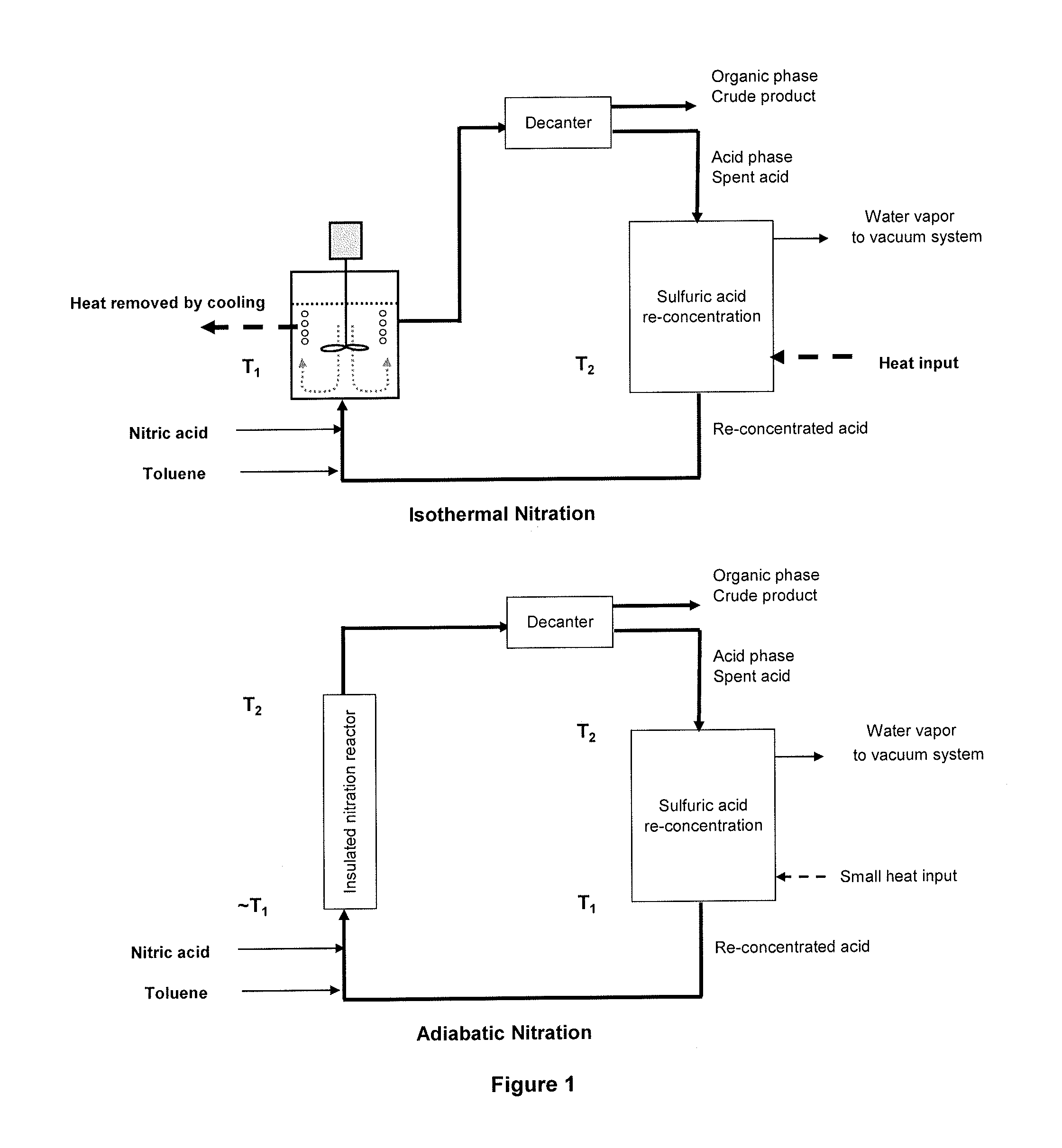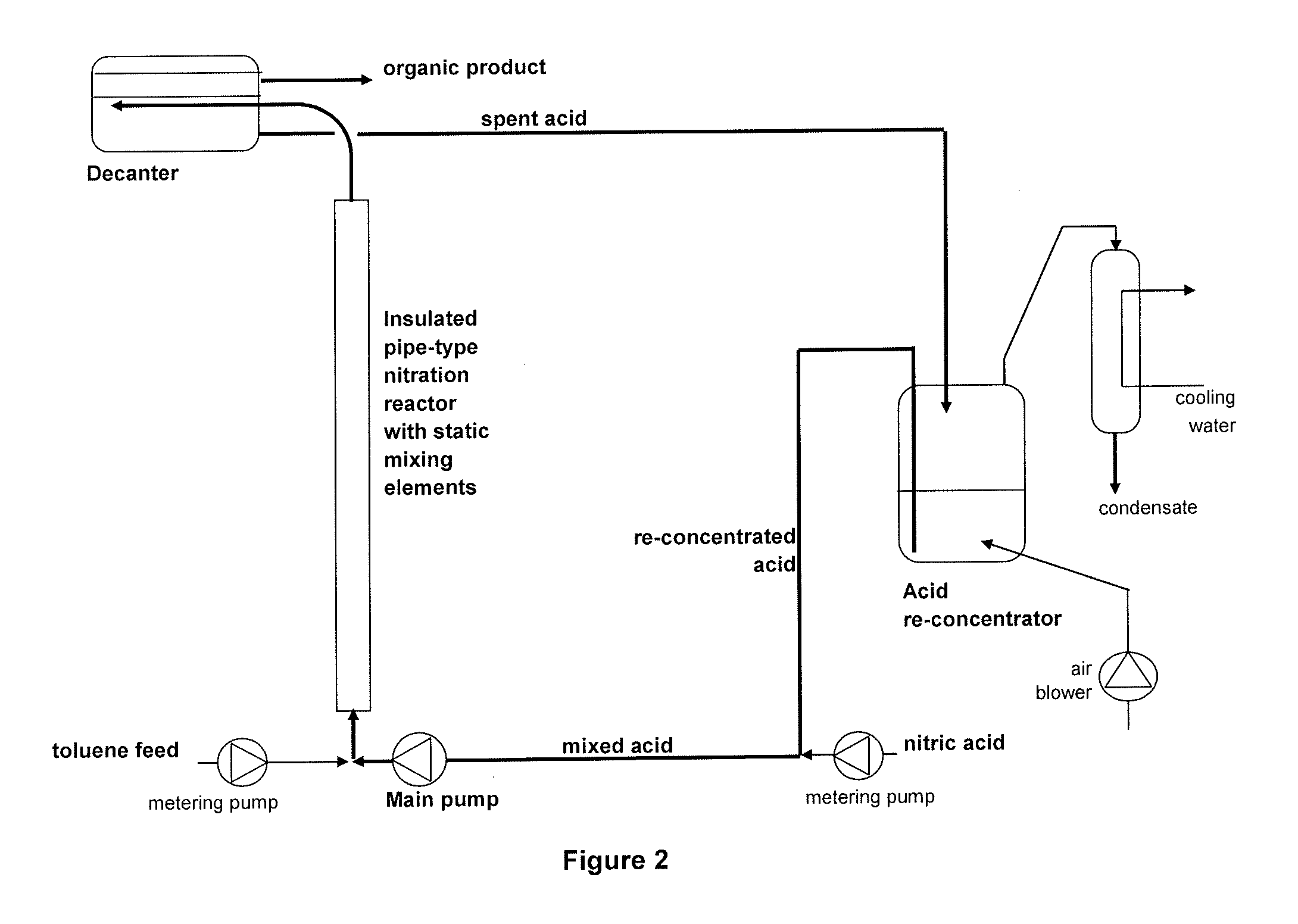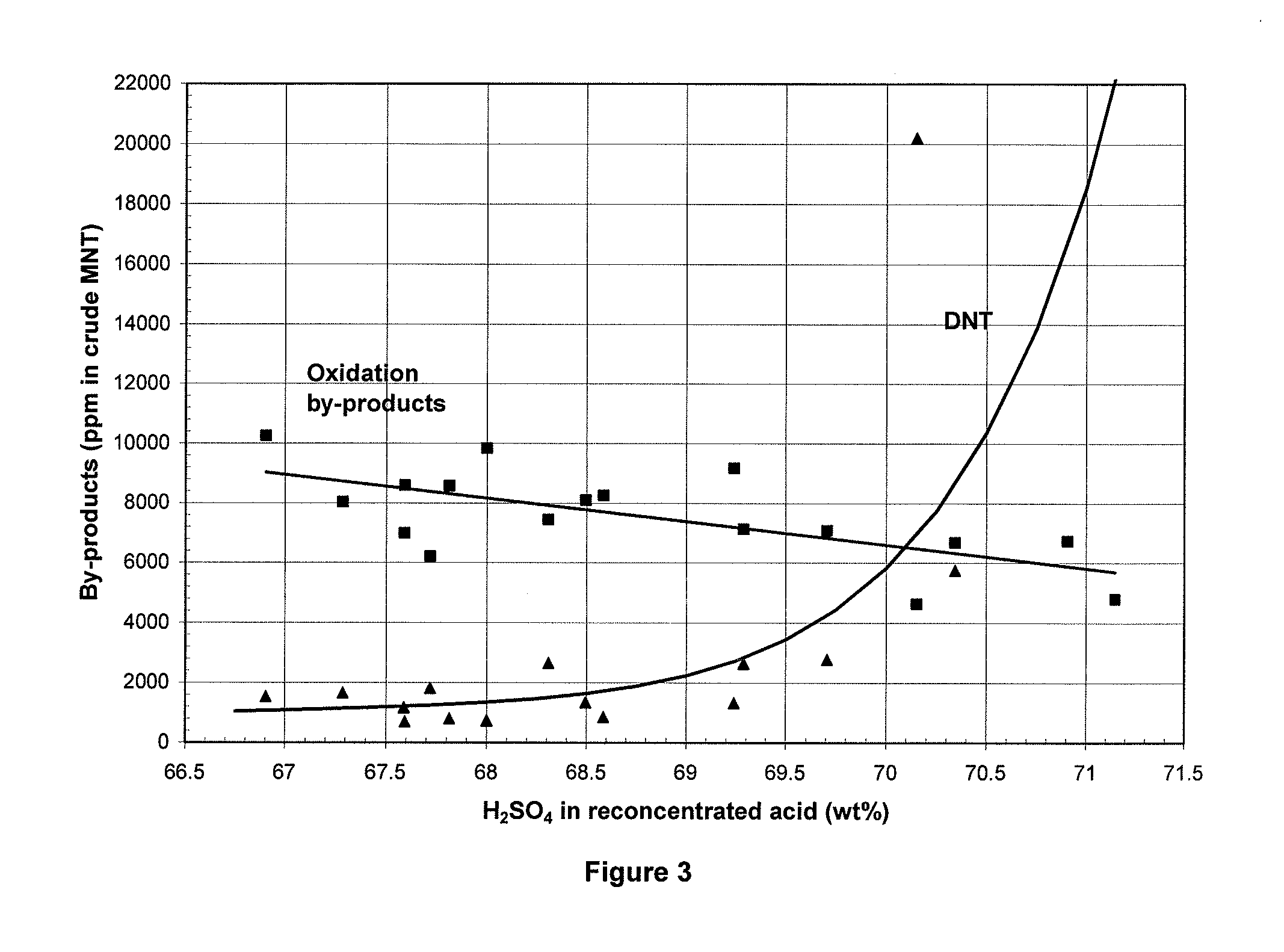Process for adiabatic production of mononitrotoluene
a mononitrotoluene and process technology, applied in the preparation of nitro compounds, oxygen-containing compounds, functional groups, etc., can solve the problem of less total reaction per pass, and more problems in shifting to higher reaction temperatures as would be required for an adiabatic mnt process
- Summary
- Abstract
- Description
- Claims
- Application Information
AI Technical Summary
Benefits of technology
Problems solved by technology
Method used
Image
Examples
examples 6-17
[0091]Nitrations were carried out in accordance with the procedure described above using the nitration loop shown in FIG. 2. The values of the reaction parameters and the results are set out in Table 1. These nitrations were all satisfactory, with acceptable levels of by-products and stable operation with repeated recycling of the sulfuric acid.
[0092]
TABLE 1Testing resultsCrude productTolueneoxidationReconcentrated acidToluene / ReactorSpent acidby-waterMixed acidHNO3MixingresidualDNTproductsExam-Temp.H2SO4vaporHNO3H2SO4stoichi-Vol. %powerTinToutH2SO4HNO3ppm in ppmpleCwt %mbarwt %wt %ometry(at Tin)W / kgCCwt %wt %MNTin MNT697.069.3843.1265.71.239.78.692.7120.667.30.0132,6427,131796.068.6882.5365.71.318.48.192.3114.566.70.0048618,272894.068.0862.8364.81.289.18.489.5114.066.30.0037379,841993.167.6862.8364.41.289.08.588.7113.665.70.0106878,6001093.567.8862.8364.61.289.18.889.5114.265.80.0108138,5821192.567.3872.6664.31.328.77.187.6111.265.70.0061,6698,0331292.567.6842.6564.61.348.95.887.81...
PUM
| Property | Measurement | Unit |
|---|---|---|
| molar ratio | aaaaa | aaaaa |
| residence time | aaaaa | aaaaa |
| volume fraction | aaaaa | aaaaa |
Abstract
Description
Claims
Application Information
 Login to View More
Login to View More - R&D
- Intellectual Property
- Life Sciences
- Materials
- Tech Scout
- Unparalleled Data Quality
- Higher Quality Content
- 60% Fewer Hallucinations
Browse by: Latest US Patents, China's latest patents, Technical Efficacy Thesaurus, Application Domain, Technology Topic, Popular Technical Reports.
© 2025 PatSnap. All rights reserved.Legal|Privacy policy|Modern Slavery Act Transparency Statement|Sitemap|About US| Contact US: help@patsnap.com



